HistoRY
In 1956, Cologne is a town rebuilding totally. The scars of World War II aren’t yet healed when Europe starts dividing again, East against West. In response to the huge damage caused by wars and ideologies, how can one restore young people’s trust in the future? How to save this great European heritage, buried under the rubble? How to put it back in the hands of youth in search of roots and a future?
Concerned about these issues, about thirty young people gathered in Cologne. Among them, Catholics, Protestants and one Orthodox. They were aware that Europe’s contemporary nations refusing God, idolising race and nationality, and tending to subject faith to the country’s interests, and to the general will or to the reason of State led to the worst follies and to the division of Europe. The sense of the common good had been lost. To them, it was urgent to place God back in the centre of a European project. Therefore, they founded the Federation of European Scouting (FSE), an international brotherhood the primary purpose of which is to educate youth by practising scouting, as designed by Baden-Powell, on Christian bases within a European framework.
Their vision? A true European brotherhood.
Over the following decades, European Scouting developed first of all in West European countries and then set foot in Eastern Europe after the fall of the Berlin Wall. At the beginning of the 21st century, a sister union was created on the North American continent under the name of Federation of North American Explorers (FNE).
Key dates
1956
Creation of the Guides and Scouts of Europe in Germany as “Fédération du Scoutisme Européen (FSE)”. Later, it became the „Union Internationale des Guides et Scouts d’Europe – Fédération du Scoutisme Européen (UIGSE-FSE)“.
1975
500 leaders, rover scouts and wayfarer guides of our Federation went on a pilgrimage to Rome on the occasion of the Holy Year. Pope Saint Paul VI said publicly during the general audience in St Peter’s Square: “Guides and Scouts of Europe, know that you will always be friends of ours. We greatly trust your presence, your work and your scout spirit. Be blessed! Take back with you, together with the memory of the jubilee in which you have taken part, the sense of firmness and faithfulness to Christ and His teaching.”
1980
As an international non-governmental organisation, the Union is given advisory status with the Council of Europe in Strasbourg. In 2003, it has participatory status to honour the role of civil society in the work of the Council of Europe.
1984
5,000 Guides and Scouts of Europe meet in France for their first international jamboree. This so-called “Eurojam” was organised for the teenagers from 12 to 17.
1994
Second Eurojam in Italy. Pope Saint John-Paul II hosted 7,500 participants in St. Peter’s Basilica for a private audience.
2003
Third Eurojam in Poland. 9,000 teenagers from many Western and Eastern European countries ended their rally with a pilgrimage to Czestochowa. A plaque commemorating the event was fixed at the entrance of the Basilica, where it may still be seen.
2003
The International Union is provisionally recognised by the Holy See as an international private association of the faithful of pontifical right. Recognition was confirmed in 2008, thus making it official and permanent.
2007
First Euromoot in Slovakia and Poland with a night pilgrimage of the 2,500 participants to Czestochowa, at the end of it. The “Euromoot” was organised for the youth of 17 or more.
2011
World Youth Day in Madrid (Spain). The Scouts of Europe were one of the main voluntary associations organising the WYD with the participation of 1,300 Rovers and Wayfarers from 15 countries.
2014
Fourth Eurojam in France, with 13,000 participants. The visit of St. Thérèse of Lisieux’ relics in the “camp town in the woods of Normandy” was the highlight.
2016
The World Youth Day in Krakow, Poland: 1,500 rover scouts and wayfarer guides from 15 countries served the Church and the youth from all over the world as volunteers. The Guides and Scouts of Europe accounted for a third of the foreign volunteers.
2016
The Union celebrated its 60th birthday with the “Scouteurop’Tour”. At the end of this event that lasted a year, a hundred 15 and 16 year old scouts and guides rallied in Brussels.
2019
Second Euromoot in Italy with 5,000 participants from 21 countries. They met, shared and walked towards Rome where the Holy Father, Pope Francis, hosted them at a private audience.
For history fans…
- The origins
- The early days of the FSE
- The FSE badge
- The founders’ spirit
- International exchanges and federal camps
- Périg Géraud-Keraod and a flourishing movement
- Developing the movement
Scouting was born in England during the first years of the twentieth century. Founded by Lord Baden-Powell, scouting crossed very quickly the borders of the British Empire, for which it had been designed initially, and expanded worldwide.
It reached countries of longstanding Catholic tradition where official Catholic scouting appeared, alongside non-confessional or multi-confessional scouting initiatives. This was the case in particular in Belgium, in Italy and in France.
We may rightly consider that Father Jacques Sevin (French), Professor Jean Corbisier (Belgian), and Earl Mario di Carpegna (Italian) were the founders of Catholic scouting. They promoted Catholic associations, i.e. “Scouts de France”, “Baden Powell Belgian Boy Scouts”, and “Associazione Scautistica Cattolica Italiana” (A.S.C.I.), respectively. Through their commitment, the “International Office of Catholic Scouts” was also born, in order to be a point of reference for all the Catholic scouts.
Sevin, Corbisier and Carpegna managed to adapt an educational method born in an Anglo-Saxon and Protestant background to the Latin and Catholic background of their countries, without modifying it. Baden Powell said: “Our method has four aims: character training, practical sense, health and strength, and service to others”. The founders of Catholic scouting emphasised a fifth aim: “The Sense of God”.
However, their attempts to reach closer understanding and brotherhood among all the Catholic scouts conflicted with the events of that time and the appearance of authoritarian or dictatorial regimes forbidding scouting or limiting greatly its freedom of action.
Years later, after World War II, when some were trying to build new popular educational initiatives, new educators went back to the proposals made by the founders of Catholic scouting.
On November 1st, 1956 in Cologne, Germany, about thirty young German and French leaders met; they were Catholic, Protestant and Orthodox. Their meeting gave birth to the “Federation of European Scouting”.
After a three day long discussion, they agreed on a document in ten articles, i.e. the Federal Statute. The first article says: “The Federation of European Scouting is founded. It is an international scouting association, made up of national sections. Its aim is to practise Baden Powell’s Scouting method, within the European frame and on the Christian bases included in the idea of a united Europe.”
As official emblem for all associations, the Federation adopted a Maltese cross with eight points and a golden fleur-de-lis. This choice was not made per chance. It was on All Saints’ Day, when the Church proclaims solemnly the eight Beatitudes to the whole world. For the FES, these Beatitudes are precisely symbolised by the eight points of its emblem.
Starting on November 1st, 1956, the Federal Council met annually. It still does nowadays. At the Federal Council meeting of the following year, a second text was written, entitled “Religious Directory”. It developed the first article of the Federal Statutes and set the rules of religious life in the units. The Religious Directory of 1957 says in its first article: “The organisation called Federation of European Scouting recognises the full value of Christian faith. It acts and makes decisions according to the rules of this faith”.
With an extraordinary sense of symbolism, the young leaders gathered in Cologne chose a badge to be worn on one’s heart, summing up their entire ideal.
The badge of all the scouts in the world is the fleur-de-lis, chosen by Baden-Powell because it used to point North on former compasses and sea charts.
With this symbol, Baden-Powell wanted to make clear his intention to train characters, i.e. to train men and women capable of making their way and keeping their lives on course, regardless of social and psychological background changes around them.
For the young people gathered in Cologne, the polar star pointed at by the fleur-de-lis of the compass was Christ, who died on a cross and resurrected for the salvation of all men. This cross, red with the blood of Christ, has eight points symbolising the eight Beatitudes of the Sermon on the Mount, an exciting life programme for those who want to follow Christ.
General Commissioner, Karl Schmitz Moormann, from Germany, living in Paris in 1957 for his studies, asked Pierre Joubert, the famous scout illustrator and great heraldry expert, to draw the badge.
For aesthetic reasons, Joubert looked for a cross thick enough in the centre to include the golden lily, and his choice fell on the eight-pointed cross of the Cistercian Abbey of Morimond, which later became the cross of the Knights Hospitallers of St. John of Jerusalem.
A background paper written at the end of 1959 helps us to better understand the spirit of these young people.
“Some boys and girls agreed it was impossible to start fighting again every 20 years against one another and to have millions of war orphans just waiting for their turn to leave for a new war…
Because in front of destroyed cities, children burnt by napalm, children with only one leg left limping on between two crutches, and men with no hands, no eyes, something rose inside us and shouted “Enough!” (…)
Because, as we saw in camps, and in rallies we had shared, that nothing, absolutely nothing separated us, and friendship developed among French people, Austrians, Belgians, and Italians…
So, we engaged in this battle against those who want to make mistrust and hatred grow among us. And so, with our smile and our open hands only, and the little we possess, that is the heart of a free and loyal human being, we went towards one another, accepting the same cross superimposed with the golden lily…
So, Reformed, Catholic, Orthodox, we only wanted to remember that Christ died for all (…) and we wanted to see in the other a total Christian whom God loves. And beyond the divisions of men, we wanted to be therefore Scouts of Europe…”
These young leaders also dared to add something new and important to the text of the Promise: faithfulness to Europe. Thirty years before it was adopted by the European Union, the twelve golden star flag was flying on all FES camps. The first Guides and Scouts of Europe would also see in it a Christian symbol, i.e. the twelve stars of the Virgin Mary’s crown as described in the book of Revelation.
In its early years, the Federation included scout groups in Germany, France, England and Belgium. In number, FSE was still small but it carried out many international exchanges: its European spirit and the European contacts it developed in its units made European Scouting stand out from the other scouting organisations existing at the time. It multiplied visits, meetings, twinning activities and common camps. In the French publication Passat for scouts and guides we can read: “The Summer camp is above all an opportunity to get to know Europe and our brother scouts better. A troop or company NEVER goes camping alone but always with boys or girls from another country”.
FSE organised “federal camps” or “Jamborettes”. In 1959, the first federal camp was held in Wasserfal, Germany, with about 150 German, French and Belgian participants. The following year, a second federal camp was held in Saint-Loup de Naud, near Provins, in the Paris region, with 200 German, French and Belgian participants, plus British participants who had recently joined FSE. In 1962, a third federal camp in Botassart, Belgium, rallied 250 scouts and guides. In 1964, a fourth camp took place in Marburg, Germany, with 400 scouts and guides. Another one was organised in Kergonan in Brittany, France, in 1968.
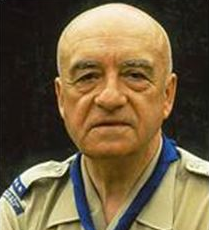 In 1962, Perig Géraud-Keraod and his wife Lizig joined the French FSE association. In a few years, they passed on to the movement a specific spirit and a living dynamism, in a word, a soul. They were the French association’s general commissioners for almost 25 years. They were also in charge of FSE at the European level. Thanks to their action and despite external difficulties, FSE experienced a considerable development in France and throughout Europe. In 1986, when the couple stepped down, FES counted more than 50,000 members. Therefore, we can truly consider them to be the real founders of FES.
In 1962, Perig Géraud-Keraod and his wife Lizig joined the French FSE association. In a few years, they passed on to the movement a specific spirit and a living dynamism, in a word, a soul. They were the French association’s general commissioners for almost 25 years. They were also in charge of FSE at the European level. Thanks to their action and despite external difficulties, FSE experienced a considerable development in France and throughout Europe. In 1986, when the couple stepped down, FES counted more than 50,000 members. Therefore, we can truly consider them to be the real founders of FES.
Perig Géraud-Keraod (1915-1997) was a scout when he was young. During World War II, he took an active part in the French Resistance. After the Liberation, he was an active member of the Breton Catholic Mission in Paris.
In October 1962, Pierre Géraud-Keraod (Perig in Breton) and Lucienne (Lizig in Breton) joined FSE with their 7 groups of the “Bleimor Scouts Community”, from the Breton Catholic Mission.
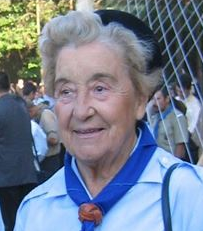 Perig Géraud-Keraod gave new momentum to the French association and to the whole FSE. He wanted to make Father Sevin’s Catholic Scouting revive, integrating a European spirit and dimension into it. Thanks to the couple’s action, the Religious Directory was revised in March 1963. A large part of the Charter of Catholic Scouting, which the Holy See had promulgated on June 13th, 1962, was incorporated. At that time too, the ceremonial and the uniform were defined, and the first training camps for leaders and for patrol leaders took place. Perig and Lizig also launched a wide-ranging reflection process on the Scouting principles, leading to the writing and signature by the federated associations of the « Charter of Natural and Christian principles of European Scouting » in June 1965.
Perig Géraud-Keraod gave new momentum to the French association and to the whole FSE. He wanted to make Father Sevin’s Catholic Scouting revive, integrating a European spirit and dimension into it. Thanks to the couple’s action, the Religious Directory was revised in March 1963. A large part of the Charter of Catholic Scouting, which the Holy See had promulgated on June 13th, 1962, was incorporated. At that time too, the ceremonial and the uniform were defined, and the first training camps for leaders and for patrol leaders took place. Perig and Lizig also launched a wide-ranging reflection process on the Scouting principles, leading to the writing and signature by the federated associations of the « Charter of Natural and Christian principles of European Scouting » in June 1965.
In 1974, the Canadian association was founded. In 1976, a Catholic association was set up in Germany. Associations were also set up in Italy and in Luxemburg.
In order to take these new developments into account, and to prepare for the future, the Federation structured its organisation on more appropriate bases. The Federal statutes were updated. With the new Federal statutes, the official name became the name known today, i.e. ”Union Internationale des Guides et Scouts d’Europe – Fédération du Scoutisme Européen” (International Union of Guides and Scouts of Europe – Federation of European Scouting). From then on, FSE became UIGSE-FSE.
In 1977, the German Protestant association and the Swiss association were set up, and then the Spanish and Portuguese associations in 1978. The Austrian association appeared in 1981.
On March 12th, 1980, the Council of Europe granted to UIGSE-FSE advisory status within the Conference of International Non-Governmental Organisations. Now, it has participatory status. On November 9th, 1989, the news of the Berlin Wall fall broke during the meeting of the Federal Council in Rome. From then on, the development of UIGSE-FSE began to spread beyond the former “Iron Curtain”. The main architect of this development was the new Federal Commissioner, Gildas Dyèvre, strongly supported by the French, Italian, German and Belgian associations.
For 50 years, communism worked vigorously and relentlessly to wipe out faith from the lives of the peoples from Central and Eastern Europe. But it failed and UIGSE-FSE received information and help requests from many countries where people wanted to know about Christian Scouting so as to be able to act through it to evangelise youth. This led to the birth of new scouting associations that joined UIGSE-FSE, i.e. in Hungary in 1990, in Romania in 1991 and in Lithuania in 1992. In Poland, the Catholic scouting association ZAWISZA, founded clandestinely in 1982, joined UIGSE-FSE in 1995. In the following years, new groups were set up in Albania, Bulgaria, Belarus, Latvia, the Czech Republic, in Slovakia and in Ukraine. In 2003, the Russian association ORIOUR was admitted as “observer”.
Nowadays, UIGSE is composed of more than 67,000 members in more than twenty European countries, extending to Canada, the USA, Mexico and Argentina.
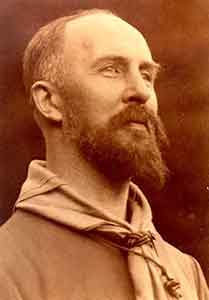
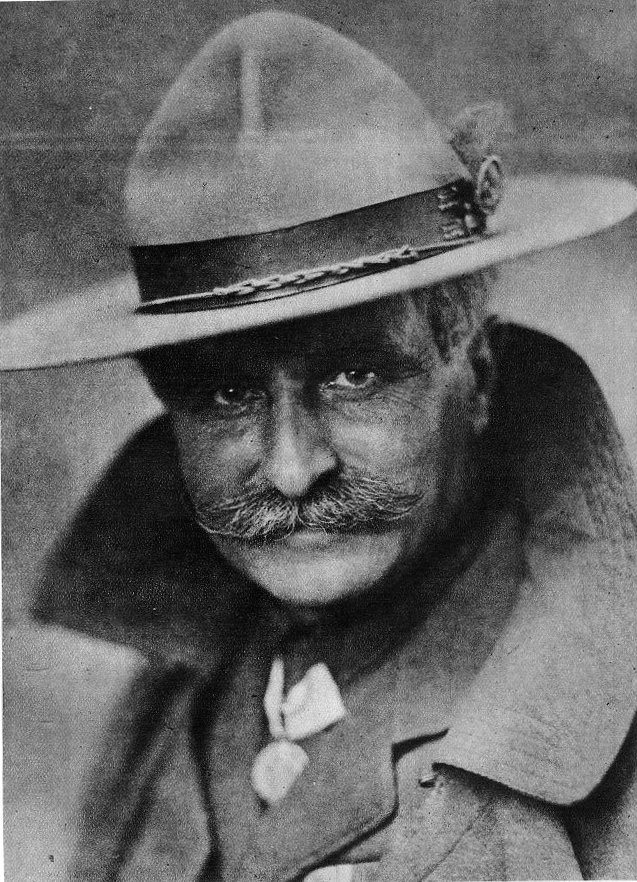
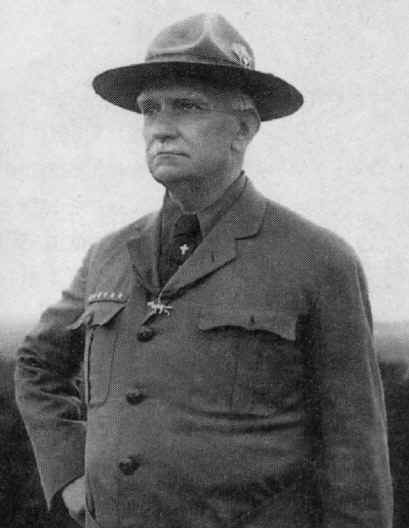
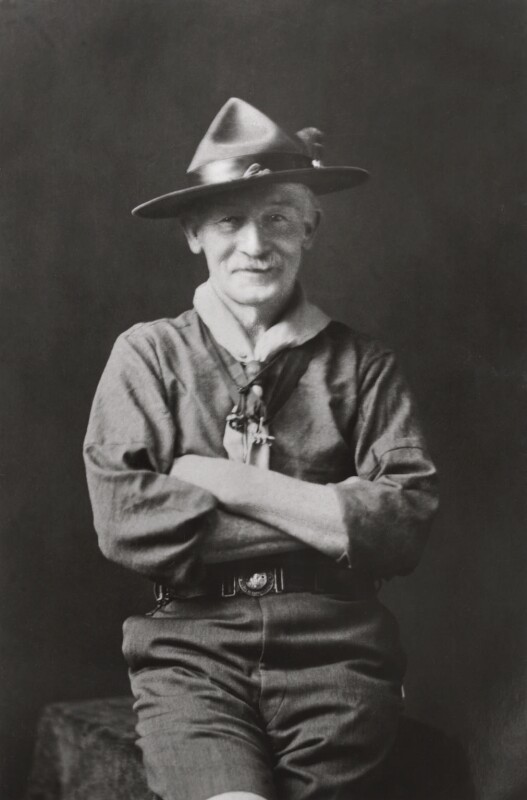
Père Jacques Sevin (France)
Professor Jean Corbisier (Belgium)
Comte Mario di Carpegna (Italy)
Lord Robert Baden-Powell (Great Britain)